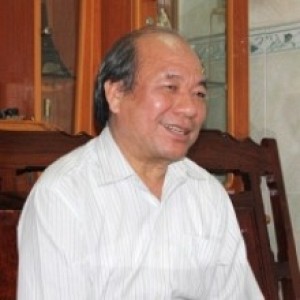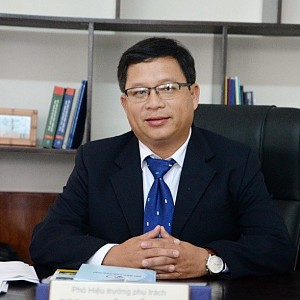Search Papers
6 papers
CAREER CHOICE TRENDS AMONG YOUNG PEOPLE IN HO CHI MINH CITY’S SUBURBAN AREAS TODAY
Tran Thi Thao
DOI: tdmu.EJS/2024.03.594
In the context of the robust economic and social development in Ho Chi Minh city’s suburban areas numerous job opportunities have emerged for the youth. However, choosing a suitable career to develop oneself and ensure a stable future is crucial for them. Therefore, young people need to consider multiple factors when making career decisions. Having based on qualitative and quantitative data collected from community surveys conducted between 2022 and 2023, the study aims to analyze the current situation and factors influencing career choices among youth in the suburban areas of Ho Chi Minh City. The results indicate that career choices among young people in the suburban areas of Ho Chi Minh City are highly diverse due to the influence of various factors. Notably, urban development reducing agricultural land, along with industrialization, modernization, and communication, are key factors impacting the selection and pursuit of careers in these suburban areas.
ASSESSING THE SUSTAINABILITY OF URBAN LAND USE IN PLEIKU CITY, GIA LAI PROVINCE
Nguyen Ninh Hai, Nguyen Thi Lan Thuong, Nguyen Thi Ly, Nguyen Thi Ha, Truong Quoc Minh
Sustainability in land use plays an important role in the urbanization process toward achieving the goals of the 2030 Agenda for Sustainable Development. This study integrates Earth observation data through satellite imagery analysis combined with field surveys to assess the Urban Land Use Efficiency (ULUE) by using the land use efficiency index, estimates the relationship between land use, population growth, and the urbanization process in Thang Loi ward over a 20-year period. The findings reveal inefficient urban land use, where the expansion rate of built-up areas exceeds the population growth rate in the studied area. From 2002 to 2022, the population and built-up area increased by 339% and 460%, respectively. In most of the expanding areas, there is widespread hoarding and fragmentation of land use, with numerous plots of land being vacant or underutilized for many years due to lack of control. Therefore, to improve land productivity and ensure sustainable urban growth, the local government should consider improving the Urban Land Use Efficiency Index.
The effect of economic structural transfer on urban development in Binh Duong province
Nguyen Thi Hoai Phuong
Binh Duong, a dynamic province in the Southern Key Economic Region in Vietnam, has a fast growing economy and strong economic restructuring towards industrialization and modernization, have affected many aspects of economy, culture, society and environment. This study analyzes the influence of economic restructuring on urban development in Binh Duong province by utilizing the time series data throughout 2000 - 2020 and the household interview method of the topic "Urbanization and its effects on land use restructuring in Binh Duong province" shows the shift of occupations from agriculture to non-agriculture. The research results show that economic restructuring contributes to promoting economic and social development in general and expanding the urban network of Binh Duong province in particular, but it has some limitations in the process of development. Therefore, Binh Duong wants to successfully integrate into the world economy and develop urban areas towards sustainability (by 2030), it must have specific, scientific and objective analysis and evaluation on the success and limitations of the economic restructuring process and its impact on the urban system in recent times. The research results also have a scientific basis for proposing appropriate and effective solutions and policies to successfully implement the goals and orientations of economic restructuring and urban development that Binh Duong has been approved.
Application Of Iso 14001:2015 International Standards In Determination Of Environmental Aspects At Market Pig Farm With Semiautomatic Technology Farm Size 12,000 Pigs Per Year In Phu Giao District, Binh Duong Province
Nguyen Thị Xuan Hanh, Vo Thi Hong Tham, Vo Thi Hai Yen
Recognized as a smart city, Binh Duong's smart city development strategy also includes the development of automated agriculture, typically large-scale livestock farming. A sustainable urban development will not be able to ignore the factor of providing food for urban and regional people. Phu Giao district - Binh Duong province is one of the leading districts in livestock farming, especially concentrated pig farming. The agricultural industry, pigs breeding, is one of the strengths of the district, besides the cultivation of short and long-term industrial crops such as rubber, cashew, Ho Tieu... Livestock is a very old profession of the Vietnamese people in Phu Giao district as well as in Binh Duong province. The contribution of livestock production to the socio-economic face of the district cannot be denied. However, animal husbandry activities, besides the economic values, also cause some consequences to the natural environment such as soil and water pollution, noise, odors in the air, etc. Hence, we decided to do the research of "Application of ISO 14001:2015 international standards in determination of environmental aspects at market hog farm with semiautomatic technology farm size 12,000 pigs per year in Phu Giao district, Binh Duong province" (TCVN ISO, 2015). This is a large-scale pig farm with modern semi-automatic technology equipment. We expect to find out environmental issues in the most detailed and specific way so that the owner can overcome the above environmental problems, rest assured to raise livestock and develop more expansion later. We conducted a review of the areas on the farm, evaluated the activities in each area, from which we found out the environmental problems through the material flow diagram (Phạm Thị Hồng Cẩm, 2020). Next, through the multi-criteria method (Phạm Thị Hồng Cẩm, 2020) we calculated the score and found the most significant environmental aspects (most environmental risk). The research results will be a general picture to provide farm owners with an intuitive and easy-to-understand view for suitable solutions. Developing farm economy along with environmental protection towards sustainable development of livestock agriculture.
The impact of foreign direct investment on sustainable urbanization in Binh Duong province
Nguyễn Thị Hoài Phương
In urban development, urbanization is an important and decisive process of transformation. In the current globalization period, the urbanization of cities around the world is strongly influenced by the foreign direct investment (FDI). It is considered an important catalyst for economic growth. This paper aims to analyze the effect of FDI on sustainable urbanization in Binh Duong province by utilizing the time series data throughout 2000 - 2018, expressed through statistical and analytical methods. The research results show that FDI contributes to promoting economic, social and urban development in Binh Duong province, but it still has some limitations. The research results are also the basis for researchers and policy makers to develop orientations to attract, use and manage FDI, proposing solutions to improve the efficiency of it to urbanization in a sustainable way in Binh Duong province in the future.
A study about the sustainable challenges of extended areas in Taiwan and lessons for Ho Chi Minh, Dong Nai and Binh Duong regions
Tran Dinh Hieu, Nguyen Hong Giang
This paper examines the main challenges of the processes of space and social policy change present to current urbanization trends of Taiwan. The chapter argues that one of the main challenges is economic growth, increasing integration into the global economy and making Taiwan competitive in the global economy. This process leads to the growth of large urban regions that present many challenges to the urban development in the future. In particular, the paper focuses on the most fragile areas of the extended urban spaces are the rural and urban margins, where urban activities are expanding into densely populated agricultural regions. It is argued that in these areas, local policies should be developed that adapt to local ecosystems. The paper presents lessons of interventions in this field for Ho Chi Minh, Dong Nai and Binh Duong Region for urban expansion.
Publication Information
Publisher
Thu Dau Mot University, Viet Nam
Honorary Editor-in-Chief and Chairman of the Editorial Board

Assoc. Prof. Nguyen Van Hiep
Deputy Editor-in-Chief

PhD. Trần Hạnh Minh Phương
Thu Dau Mot University
Thu Dau Mot University
Editorial Board

Prof. Tran Van Doan
Fujen University, Taiwan
Fujen University, Taiwan

Prof. Zafar Uddin Ahmed
Vietnam National University Ho Chi Minh City
Vietnam National University Ho Chi Minh City

Prof.Dr. Phillip G.Cerny
The University of Manchester, United Kingdom
The University of Manchester, United Kingdom

Prof. Ngo Van Le
University of Social Sciences and Humanities (VNU-HCM)
University of Social Sciences and Humanities (VNU-HCM)

Prof. Bui The Cuong
Southern Institute of Social Sciences
Southern Institute of Social Sciences

Prof. Le Quang Tri
Can Tho University
Can Tho University

Assoc. Prof. Nguyen Van Duc
Animal Husbandry Association of Vietnam
Animal Husbandry Association of Vietnam

Assoc. Prof. Ted Yuchung Liu
National Pingtung University, Taiwan
National Pingtung University, Taiwan

PhD. Anita Doraisami
Economics Monash University, Australia
Economics Monash University, Australia

Prof. Dr. Andrew Seddon
Asia Pacific University of Technology & innovation (APU)
Asia Pacific University of Technology & innovation (APU)

Assoc. Prof. Le Tuan Anh
Thu Dau Mot University
Thu Dau Mot University

Prof. Abtar Darshan Singh
Asia Pacific University, Malaysia
Asia Pacific University, Malaysia

Prof.Dr. Ron W.Edwards
The University of Melbourne, Australia
The University of Melbourne, Australia

Assoc. Prof. Hoang Xuan Nien
Thu Dau Mot University
Thu Dau Mot University

PhD. Nguyen Duc Nghia
Vietnam National University Ho Chi Minh City
Vietnam National University Ho Chi Minh City

PhD. Bao Dat
Monash University (Australia)
Monash University (Australia)

PhD. Raqib Chowdhury
Monash University (Australia)
Monash University (Australia)

PhD. Nguyen Hoang Tuan
Thu Dau Mot University
Thu Dau Mot University

PhD. Nguyen Thi Lien Thuong
Thu Dau Mot University
Thu Dau Mot University
Assistant

Nguyen Thi Man
Thu Dau Mot University
Thu Dau Mot University

